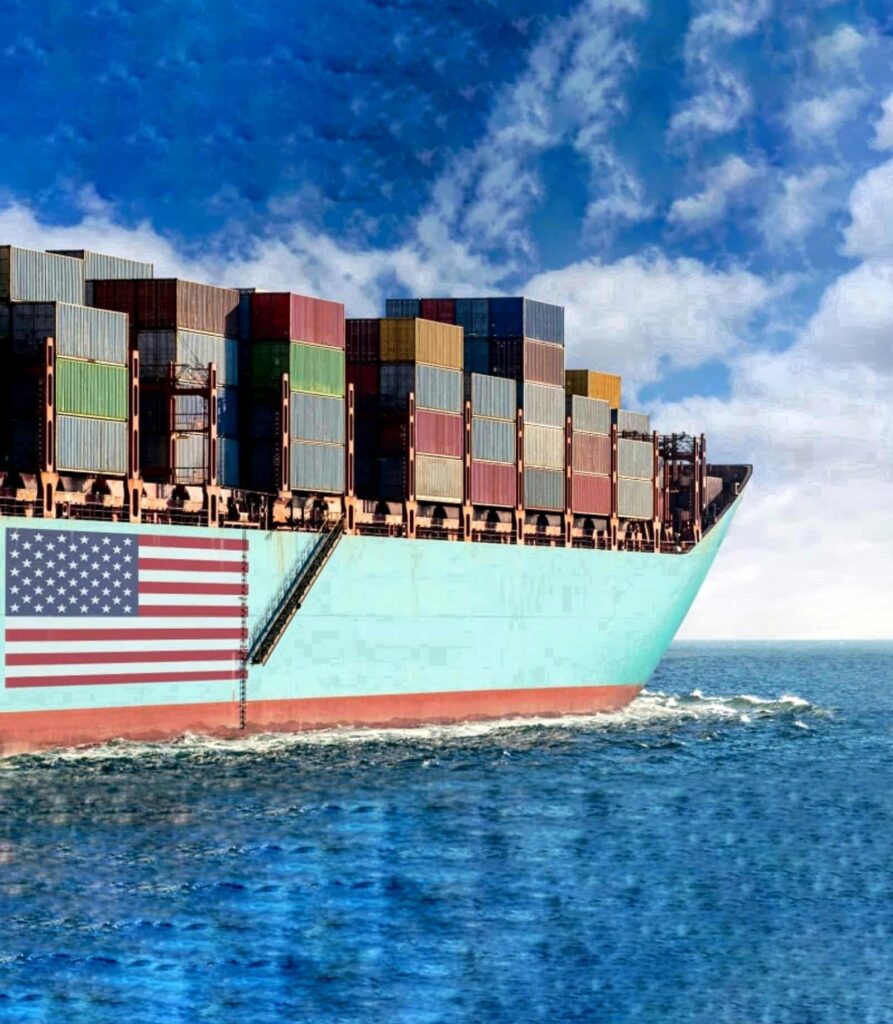The bipartisan Ships for America Act aims to rebuild national flag fleets and crews through tariffs and incentives
A bipartisan coalition in Congress of lawmakers is hoping an executive order signed earlier this month will give oxygen to a sprawling bill intended to revitalize the commercial maritime and shipbuilding industries and rebuff China and the presidential executive order “Restoring America’s Maritime Dominance.”
Sens. Mark Kelly (D-Ariz.) and Todd Young (R-Ind.) joined Reps. John Garamendi (D-Calif.) and Trent Kelly (R-Miss.) in reintroducing the Shipbuilding and Harbor Infrastructure for Prosperity and Security (SHIPS) for America Act
Establishing national oversight for US maritime policy
The objectives are clear, as stated by Senator Marc Kelly, one of the proponents: “Currently, 80 US-flagged ships are employed in international trade, while China has 5,500.
The Ships for America Act aims to close this gap and strengthen the US Merchant Marine by establishing national oversight and coherent funding for US maritime policy, making US-flagged ships competitive in the international market by reducing bureaucracy, rebuilding the industrial base of US shipyards and expanding and strengthening the recruitment, training and retention of sailors and shipyard workers .Also will establish the Office of the Maritime Security Advisor, a new position appointed by the president, with a four-member board, to provide oversight of the maritime workforce and size of maritime security fleets.
Expand the U.S.-flagged international fleet
Specifically, it aims to “expand the U.S.-flagged international fleet by 250 vessels over 10 years by creating the Strategic Merchant Fleet Program, which would facilitate the development of a fleet of U.S.-flagged, U.S.-crewed, domestically built, commercially operated merchant ships capable of operating competitively in international trade
New legislation as vital to national security and the economy
Related : Magdy Sadek :American Gorilla Wrestling the Chinese Dragon’
In a press conference at the U.S. Capitol announcing the reintroduction, Texas A&M Maritime Academy Superintendent Michael Fossum, a former astronaut colleague of Sen. Kelly’s, said the two men were now “on another mission together to serve our country.”
Fossum noted that those 80 U.S.-flagged ships included 17 sidelined because there are not enough mariners available to crew them. He hailed the new legislation as vital to national security and the economy, saying it would provide the support needed to boost training program enrollment and revamp training berths without having to pass the costs down to students
Trump : “Restoring America’s Maritime Dominance
Earlier this month, President Donald Trump, who has created a Whote House shipbuilding office, signed the “Restoring America’s Maritime Dominance” executive order. The order requires the Departments of Defense, Labor, Commerce and Transportation to work with the U.S. Trade Representative to create a Maritime Action Plan for the White House, along with options for shoring up U.S. shipbuilding. It also condemns China’s “unfair targeting of maritime, logistics, and shipbuilding sectors,” noting that China builds an estimated half of commercial ships, while the U.S. contributed just one percent. It proposes tariffs as a solution.
An initial contributions for shipbuilding
Related : Trump’s plan to revive US shipbuilding
On the other hand an initial contribution of $150 million will be made in 2026 and will progressively increase to $2.1 billion by 2035. Shipbuilding incentives and subsidies: From 2026 to 2035, $250 million per year will be made available from the Maritime Safety Fund. In parallel, the subsidy for small shipyards will be increased to $100 million per year over the same period. Shipbuilding investment tax credits: A 33% tax credit is introduced for investments in the construction of new ships in the United States, with an additional 5% if the ship is insured in the US and an additional 2.5% if it is classified to US standards
Expanding domestic shipbuilding capacity
There is also a 25% tax credit for investments aimed at expanding domestic shipbuilding capacity. Increased duties on repairs performed abroad: repairs performed on US-flagged vessels outside the United States will be subject to significantly higher duties: 200% if performed in ‘countries of interest’ and 70% in other third countries.
Measures to strengthen the competitiveness of US-flagged vessels
Measures to strengthen the competitiveness of US-flagged vessels including reduced import duties for goods carried on such vessels and priority access to ports. Incentives and programs for training maritime personnel to strengthen the operational capabilities of the strategic fleet and ensure the employment of US seafarers. The establishment of the Office of the Maritime Security Advisor, a new structure to coordinate national maritime policy and the implementation of the new US Maritime Strategy”
Sources : USNI news + Shipping Italy





